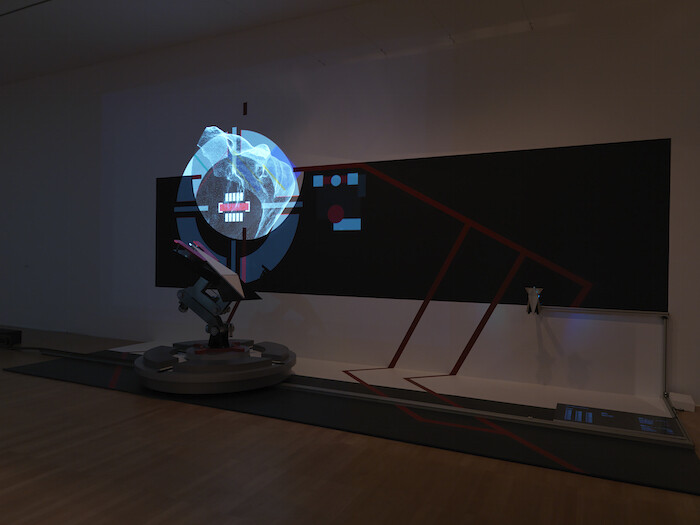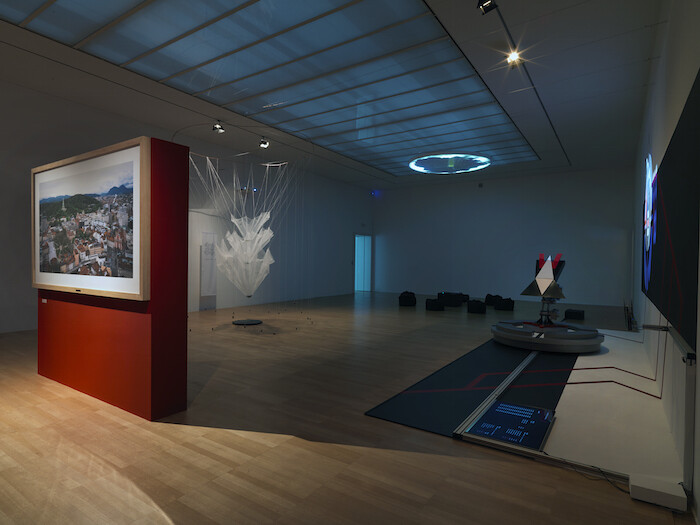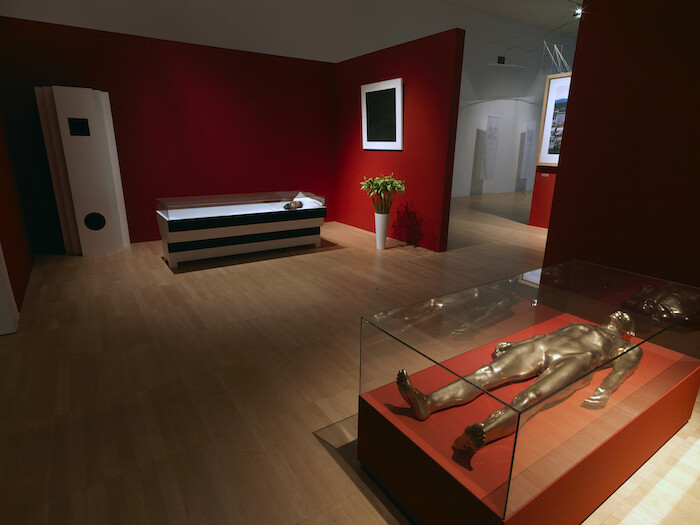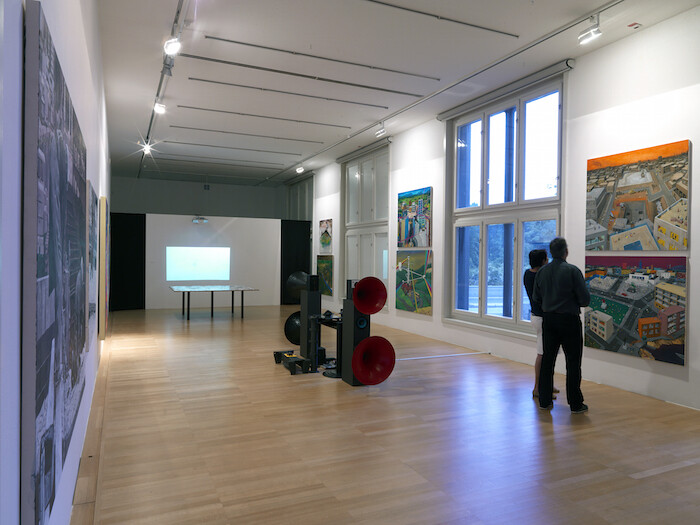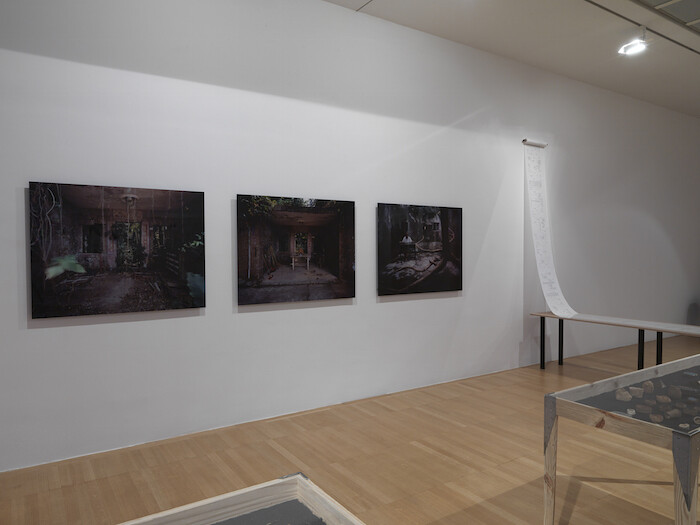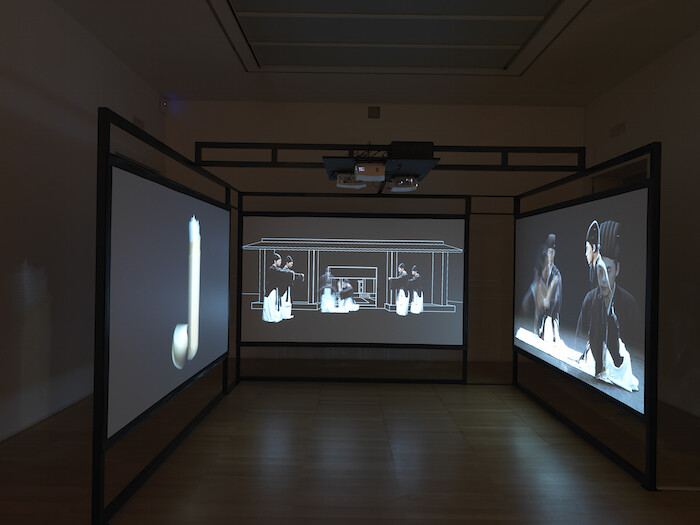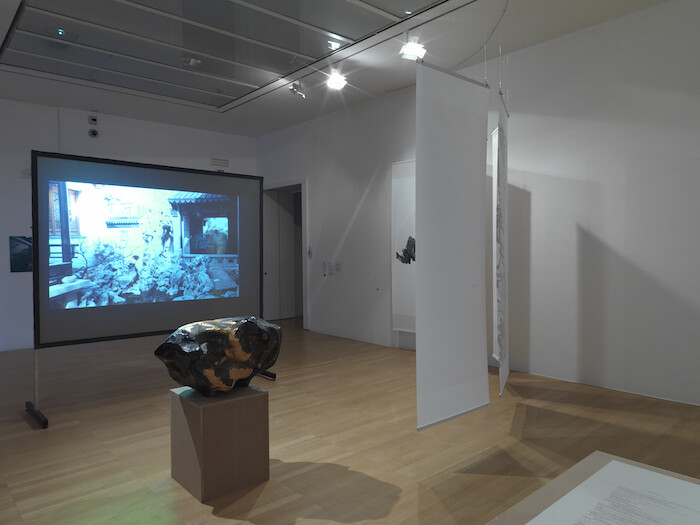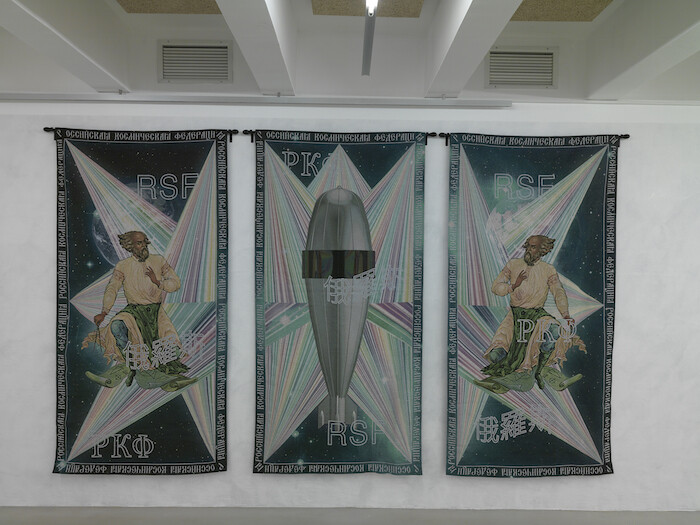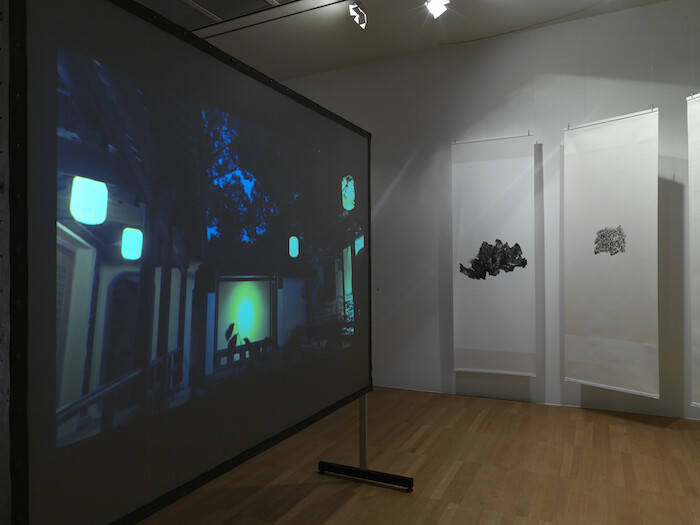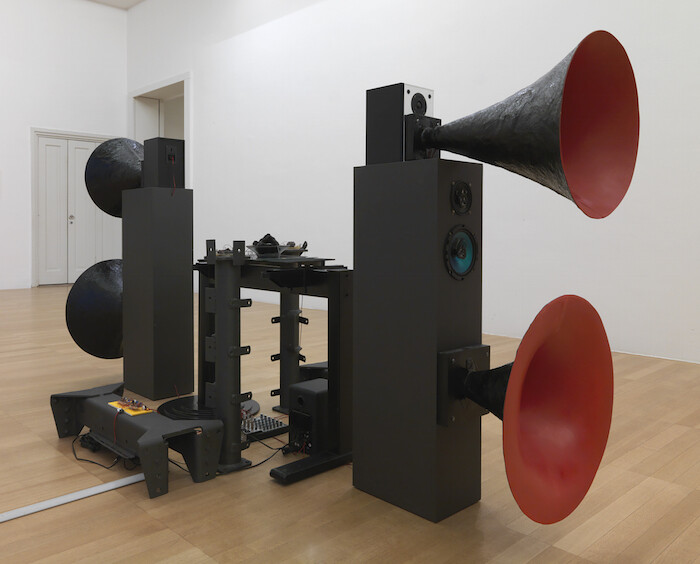In his introduction to the exhibition’s catalog, Boris Groys, the curator of this year’s edition of Ljubljana’s triennial, titled “Beyond the Globe,” refers to catastrophe movies. This pop culture allusion should come as no surprise: the destruction of the Earth by various means is mass culture’s response to the anxieties of today’s globalized world, and the goal of “Beyond the Globe” is precisely to examine how contemporary art answers to these anxieties in this world and beyond.
Connecting the exhibition’s more than 30 works, displayed mostly in Ljubljana’s Moderna Galerija, is the leitmotif of Earth and space as it manifests itself in different contexts, from Slovenia to Russia and China. The topic of outer space is surprisingly alive in the Slovenian cultural scene. The Cultural Center for European Space Technology (KSEVT) in Vitanje, for example, deals with the intersections of art, space, and science. Aktuator::MG (2016), perhaps the work most emblematic of the exhibition’s premise, was created by artists Miha Turšič, Dragan Živadinov, and Dunja Zupančič, the center’s co-founders. A tribute to the deceased actress Martina Grm, Aktuator::MG is an “art satellite” on tracks which projects abstract visuals onto surrounding walls while in motion. It’s also part of a wider project: the theater piece Noordung 1995:2045, which is staged every ten years. As members of the original cast die, Živadinov, the director, plans to substitute them with small satellites which will contribute only rhythm or sound to the play, as in Grm’s case. For the last performance in 2045, by which all the cast will be dead, 12 satellites will be launched into outer space, where they will transmit data about the play and the deceased actors.
In its projections, Aktuator::MG gives body to the artists’ idea of postgravity art: art made for exhibition in outer space, adapted to inhuman, zero-gravity conditions. It echoes the historic Russian avant-garde’s stance on space, as well as Russian cosmism which, from the beginning of the twentieth century, combined art, science, and spiritualism. Both movements aimed at spreading the Communist political project into space and asserted immortality as a condition of true equality. In the gallery’s basement Arseny Zhilyaev’s tapestries Tsiolkovsky. The Second Advent (2015-2016) are dedicated to Russian cosmists. Furthermore, the abstract aesthetics of Aktuator::MG are highly indebted to Kazimir Malevich, who also designed art for space.1 Aktuator::MG, however, generates its own ideas about how to achieve immortality: through technological replicas of artists.
The works of Slovene artists displayed in the main hall of the Moderna Galerija relate to different historical frameworks. Most of them are themselves representatives of historical art movements—namely Marko and Marika Pogačnik, members of the neo-vanguard group OHO in the 1960s, who present the installation Transforming Chaos into Cosmos and Vice Versa (2016). The same holds for Irwin, a group of painters who were part of the Neue Slowenische Kunst of the 1980s, embracing a plurality of avant-garde styles, combining them with Slovene nationalist iconography. At the triennial, Irwin presents a strange and ironic work, Corpse of Art (2003), a reconstruction of Malevich’s coffin designed by his student Nikolai Suetin as an architectone, covered with Malevich’s geometrical forms, and which holds, on its inside, a model of Malevich’s body. With this work, the group proves that not only the work but also the death of a great artist can be immortalized.
Yuri-1, Fragment of the Cradle of Humankind (2015), another of Zhilyaev’s installations, addresses similar topics. The artist presents a multiplicity of past and present artworks as artifacts from an imagined future, in which a golden model of Russian cosmonaut Yuri Gagarin’s body serves as evidence of a past civilization, exhibited in a museum called “The Cradle of Humankind.”
Sašo Sedlaček’s Sky in Ruins (2016), a video generated from open-source software and projected on the ceiling accompanied by recordings of space sounds, also offers a historical overview of key postwar Slovene art events as a work of contemporary art. In it, a simulation of limitless space is dotted with satellites circling the earth along with masses of space trash (composed mostly of pieces of broken or crumbled satellites). The artist invites visitors to look at his video in the same way that churchgoers looked at ceiling paintings in the Renaissance, destined to provide a glimpse of divine infinity. However, Sedlaček’s images of space trash circling around our planet are far less comforting.
After a glimpse of artistic utopias, Sky in Ruins rather offers artistic disillusion, confronting viewers with the cost of human space exploration. However, this confrontation is not without its comical side—it is difficult to miss Sedlaček’s gentle irony in the way he combines allusions to Renaissance divinity and inglorious human space trash. Comedy, irony, and absurdity can also be discerned in Lenka Đorojević and Matej Stupica’s analog media art installation Neur-o-matic (2014), a dystopian commentary on the conditions of today’s precarious cognitive work force. Twelve generic workstations, composed of a table with a monitor, mouse, keyboards, etc., interconnected and surveilled in such a way that they are essentially functionless and, when triggered by a certain tool, self-destruct, function as a critique of neoliberalism’s supposed fidelity to rational management. A similar analysis and critique of contemporary capitalism pervades Stap Kleindienst’s paintings (2013–2015): the artist inhabits canvases with familiar yet disturbing motifs of cities as networks upon which other communication or surveillance systems are imposed, reducing humans to insignificant dots.
One hall of the Moderna Galerija is dedicated to artists and curators from China, exacting a completely different approach to the notion of the cosmos. Its most interesting pieces are Yaji Garden (2015) and The Body of Confucius (2012), created by curators Chang Tsong-Zung and Gao Shiming in collaboration with several other artists. Yaji Garden consists of representations, in various media, of mountains and brooks, which in ancient times functioned as meeting places for intellectuals engaged in “elegant gatherings” where debates and performances took place. The Body of Confucius is an installation in which photographs, installations, and paintings represent ancient Chinese capping rites, a coming of age ceremony. Both works demonstrate how culture, with its social, political, or artistic rituals, offers a transcendence of the everyday, and engagement with a more elevated mode of human existence.
It may appear that the triennial’s different approaches, methods, and genres prevent us from forming any conclusive analysis of its main theme. However, this lack of unity is part of the curator’s reiteration of the plurality and heterogeneity that emerge from within each artwork. For example, Uroš Potočnik’s painting Workers (2014) revisits an original motif from Gustave Courbet’s painting The Stone Breakers (1849–50), transposing its subjects into a contemporary construction site. The representation of today’s manual work force—among the most exploited forms of labor—through alternating lenses of social utopias and dystopias generates a multi-layered meaning.
While self-reflexivity is a characteristic feature of contemporary art in general, Groys mobilizes it in regard to the specific topic of space in order to provide a subtle and sublime message: that art, as a special social subsystem, can create a materialist and spiritual space of its own, reflecting its aspirations, utopias, or critiques. Visitors are therefore kindly invited to participate in all the possibilities that this parallel cosmos offers. The exhibition itself is already beyond the globe; it forms a new planet where all earthly and cosmic, comic and pathetic things are possible.
Malevich was preoccupied with the idea of creating art for outer space, and he designed so-called planits and architectones: abstract three-dimensional models or sculptures appropriate for the environment of outer space.
